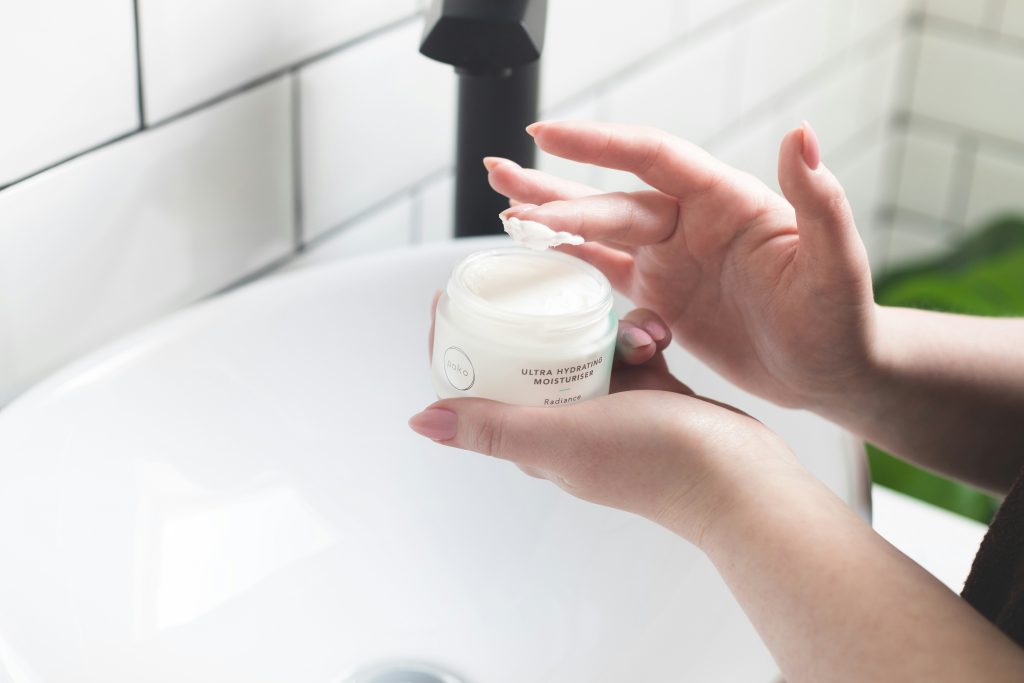With anti-aging skincare routines becoming all the rage, you may wondering what are the differences between tretinoin vs retinol. This article will over what tretinoin and retinol are and how to best use the products.
Doctors often use eNavvi to look into which retinoids are best to prescribe for their patients based on which are covered by their insurance and based on medication pricing.
What is tretinoin vs retinol
When considering which option is best tretinoin vs retinol, it is actually important to realize that tretinoin is derived from natural occurring Vitamin A or retinol. But while these are in theory the same, they do have different impacts on skin and aging due to different potencies. Retinol is converted into tretinoin through several conversion processes before it will become pure tretinoin. Both tretinoin and retinol are typically found in gel, cream or lotion form and used topically to treat acne and reduce skin aging.
Retinol is often used to treat other skin conditions such as rosacea, melasma, psoriasis and even stretch marks. Retinol can be prescribed to help with kaposi sarcoma, which is a rare form of cancer. In this instance, retinol does not treat the cancer but can slow the rate of the sarcoma cells.
In fact, retinol and tretinoin are both in the retinoid family. Other examples of retinoids are istretinoin, adapalene, tazarotene and trifarotene. Some brand name versions of these retinoids are:
- Adapalene (Differin®, Epiduo®).
- Alitretinoin (Panretin®).
- Bexarotene (Targretin®).
- Tazarotene (Tazorac®, Avage®).
- Tretinoin (Atralin®, Avita®, Refissa®, Renova®, Retin-A®, Tretin-X®).
Tretinoin vs retinol for wrinkles
As previously mentioned, there are some differences between tretinoin vs retinol even though they are both derived from Vitamin A. Retinol is less potent than tretinoin and can often be found over the counter. Whereas, tretinoin due to it’s high potency is often prescribed by a doctor. While both can treat acne and reduce signs of aging, tretinoin is more powerful at these actions due to its high potency.
What does Tretinoin do?
Tretinoin treats acne and reduces signs of aging better and quicker than retinol. Tretinoin also improves the appearance of the sign quicker than retinol.
Tretinoin treats acne by unclogging pores, reducing inflammation and prevents the formation of new acne. It can be used to treat the various forms of acne such as blackheads and whiteheads and also papules and pustules.
Tretinoin can improve the appearance of the skin by improving the appearance of hyperpigmentation such aas sunspots, age spots, and skin discoloration from acne. This product exfoliates the skin and increases skin cell turnover.
Tretinoin also has preventative along with healing properties. This product increases the skins natural defense against damage caused by the sun while simultaneously repairing damage that has already been caused by the sun.
How to use tretinoin vs retinol?
As tretinoin is prescribed by a doctor, it is important to take the medication as prescribed by your doctor.
It is advised to use retinoid products in the evening to avoid exposure to the sun. These products can react negatively with sunlight and actually cause long term skin damage if exposed to the sun.
Usually a doctor will prescribe a lower dose of a retinoid and have the patient increase potency over time. It can take 8 to 12 weeks before the effectiveness of the medication can be determined. It is also important to note that your skin condition may worsen in the beginning of product use while the skin adjusts to the new medication.
It is also often advised to do a patch test to see how your skin will react to products such as retinol. This is where you apply a small amount to a patch of skin and see the impact. If there are no negative reactions, then it is advised to slowly begin applying the products such as using the products every few days while your skin adjusts. As your skin becomes more acquainted with the medication, you can use the product more frequently.
Side Effects of tretinoin vs retinol
Tretinoin and retinol have common side effects when you begin using the product.
Some common side effects include:
- Itching or burning sensation of the skin
- Redness, peeling of skin as well as flaky and scaly skin
- Dry, irritated skin
- Increase chance of sunburn
To avoid some of these side effects, it is always a good idea to apply sunscreen (SPF 30+) and wear protective clothing to avoid sun exposure. Only use one retinoid product at a time. Lastly, it can be helpful to wait around 30 minutes after washing your face before applying your retinoid product.
Should any side effect be too painful or concern you, it is always advised to contact your medical professional to discuss if you should continue use of the product.
Disclaimer
The information included in this page is not a substitute for medical advice. The list of side effects may not include all side effects as drugs can affect all people differently. Any dosage information may not include all dosage information. It is important to discuss with a medical professional that knows your medical history well which dosage is right for you and if there are any potential risks or possible side effects. Our goal is to provide relevant information but this page may not include all up-to-date information.
